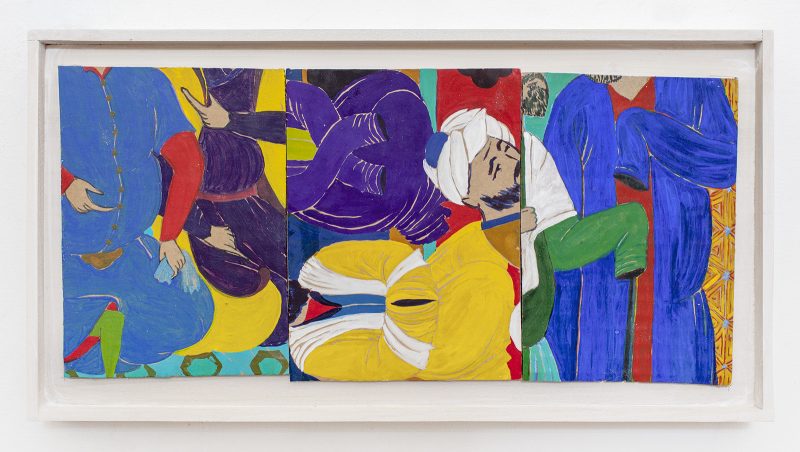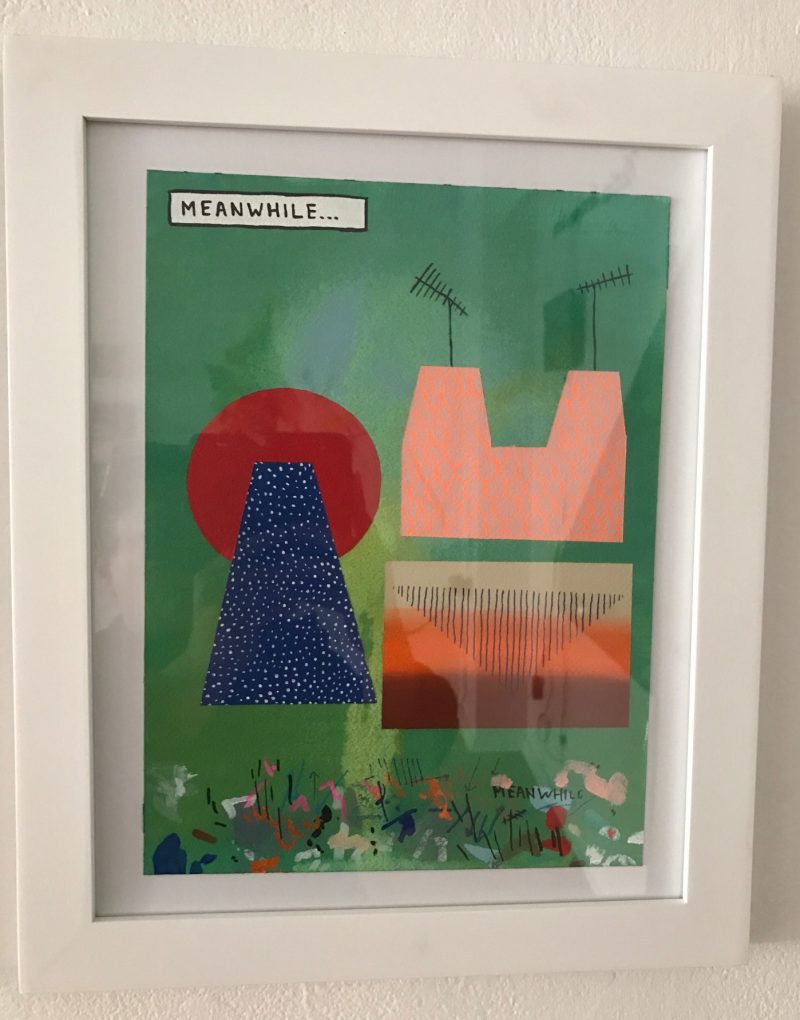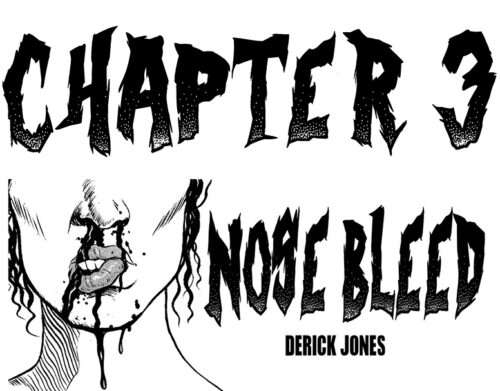“Then said the King in himself, ‘By Allah, I will not slay her, until I shall have heard the rest of her tale.’” – from Sir Richard Francis Burton’s 1885 translation of The 1001 Nights
Sheherzade, the storyteller from The 1001 Nights, is a master of survival, able to keep herself and her sister alive by entertaining the king (who wants to kill them) with nightly stories that always end on a cliffhanger at the break of day. Like Sheherzade’s tales, the works by thirteen Muslim-American women in Sheherzade’s Gift are sometimes funny, sometimes sad, and always clever.

Speech and silence
Ruby Chisti’s “Untitled (Buraq),” is a winged cow-like creature, blindfolded but with a smile on her face. On one level, this is a soft fabric take on Buraq, the beast that bore the prophet Muhammed to heaven on his Night Journey (where he spoke with God). One of the most significant events in the Qu’ran, the specifically Muslim identity of this figure is complicated by its resemblance to the monumental winged guardian figures of pre-Islamic Mesopotamia. Given the destruction by Isis of pre-Islamic monuments in the Middle East (most recently the ziggurat of Nimrud), Chisti’s figure becomes less of an innocent plush toy, and more complex, ominous, and allusive–a fitting introduction to the show of quietly feminist works.

Appropriately enough for a show named after a famous storyteller, speech, silence, and the space in between words are important themes. I loved Meena Hasan’s voluble “Chatterbox” series, sixteen snippets of scenes organized into six frames depicting talking figures painted with the rich hues of medieval Islamic manuscripts, only here painted on small pieces of humble cardboard. The figures are all male, and with few exceptions, we do not see their faces–only their gesturing hands.
Zones of transition
Much quieter but no less powerful is Nooshin Rostami’s “Pending,” which consists of the artist’s own expired Iranian passport, which she has nailed to a wooden shelf. Its pages are filled with stamps and visas for both Europe and the USA, while the blank pages contain pencil drawings of Face Time conversations with her family back in Iran. Like Adál Maldonado’s imaginary Puerto Rican passports, Rostami’s passport brings together than personal and the political. Her juxtaposition of the official story of immigration told by the visas and the more personal story suggested by the lively and loving family portraits really struck home for me. My own passport boasts several visas, each one the result of months of hunting down the right papers from the right bureaucrats, with all the stress and expense that comes with negotiating a complex bureaucracy in a foreign language. Rostami’s tiny passport packs quite an emotional punch because it speaks to an unsettled life in transition between continents and cultures.

Dahlia Elsayed’s naive abstract paintings inject a bit of humor and breathing room into this quietly intense exhibition. With titles like “All That” and “Meanwhile,” Elsayed’s paintings are the visual equivalent of the strategic pauses and ellipses of storytellers, words that gloss over boring bits of the story, moving the narrative along. With their bright colors and simplified geometric shapes that are repeated across the three paintings, Elsayed’s playful work evokes the repetition so common in folk tales–three brothers, three wishes, three tests. Amidst the other works in the show that are so strongly figural and narrative, Elsayed’s work really stands out.
In the center of the gallery, Mona Saeed Kamal adapts the most stereotypically Middle Eastern object, the woven carpet, for her piece “Drones in Waziristan.” When I first entered the gallery, I stepped on the carpet, not realizing that it was a part of the exhibition–but Twelve Gates’ director Aisha Khan reassured me that this piece was meant to be stepped on. Kamal turns the act of weaving into a form of commemoration–counting the number of deaths from drone strikes in Waziristan, in northeastern Pakistan on the border with Afghanistan. Unlike many of the other works in the show, which approach the political situation in the Middle East from a more oblique or personal perspective, Kamal opts for the direct approach, which to me minimizes the emotional impact of this piece.
Sheherzade’s Gift also includes work by Nida Abidi, Roya Farassat, Mariam Ghani, Negin Sharifzadeh, Hiba Schabaz, Katherine Toukhy, and Sa’dia Rehman. The show at Twelve Gates Arts represents just a portion of the works brought together by curator Jaishri Abichandani at Local Project in Queens, NYC. (The smaller space at Twelve Gates necessitated that Khan select a handful of pieces that would work in her Old City gallery). The multiple voices in this show come together as a finely orchestrated conversation about gender, identity, and belonging on both a personal and a political level.
Sheherzade’s Gift continues at Twelve Gates Arts, 51 N. 2nd St., until November 26. Gallery is open Wednesday through Saturday, 11-5 and by appointment.










